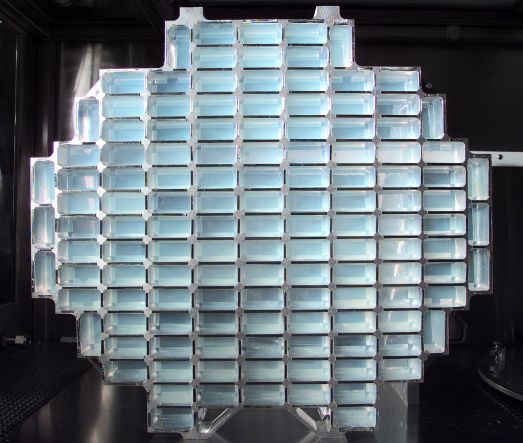Aerogel For Stardust

Credit & Copyright: Courtesy
NASA/
JPL/Caltech
Explanation:
On February 7th,
this honey comb of aluminum cells filled with
aerogel was launched
on the
STARDUST mission to interplanetary space.
STARDUST's goal is to capture dust from a
comet's tail and return to planet Earth -
the first sample return mission to
a comet!
This structure represents about 1,000 square centimeters of area
for collecting dust trailing within 150 kilometers of the nucleus of
P/Wild-2.
Comet P/Wild-2 is new to the inner Solar System.
Having spent its life in orbit between Jupiter and
Uranus, this comet was deflected in 1974 by a close
encounter with Jupiter
and now orbits between Jupiter and Earth.
Dust from P/Wild-2 should impact the aerogel at high speeds
and come to rest leaving
carrot-shaped tracks in
this amazingly tough, transparent,
ultra-low density material.
Returning to Earth by parachute in 2006,
the cometary dust sample will be analyzed
for clues to the formation and primordial composition
of our Solar System.
Authors & editors:
Robert Nemiroff
(MTU) &
Jerry Bonnell
(USRA)
NASA Web Site Statements, Warnings,
and Disclaimers
NASA Official: Jay Norris.
Specific
rights apply.
A service of:
LHEA at
NASA /
GSFC
& Michigan Tech. U.

